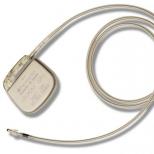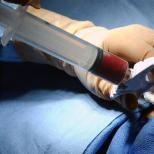How to properly apply electrodes when recording an ECG?
The performance of the heart muscle largely determines the health of the body as a whole. An electrocardiogram is a simple and informative research method that allows you to quickly and accurately assess the contraction and relaxation of the heart and even make some dangerous diagnoses.
When recording an electrocardiogram, the serviceability of the equipment is important: the device itself, electrodes and cables. Each of the elements in case of failure can be replaced using the services of an online store selling medical consumables. In addition, the nurse (or doctor) must correctly place the electrodes, otherwise the result of the study will be incorrect. Every patient should know how to apply the electrodes correctly to be sure of the reliability of the ECG.
General rules for applying electrodes
When recording an electrocardiogram, electrodes are placed on several parts of the body. This ensures the conduction of electrical impulses through the heart, and the results are more accurate. The correct location of the terminals is the key to a reliable record of the work of the heart.
General rules for installing electrodes:
- The skin at the electrode site is degreased with alcohol;
- Expressed hairline when using reusable electrodes is treated with soapy water (otherwise the hair is shaved off);
- The electrodes are coated with a special gel that improves electrical conductivity (it can be replaced with an isotonic solution, but this is not recommended, as the contact will deteriorate);
- The use of gauze pads instead of a special gel is also not an alternative to gel, since they dry out quickly (such pads are absolutely prohibited for long-term studies, for example, Holter monitoring);
- It is important to follow the safety rules when working with electrical appliances, in particular grounding (not required when recording ECG using portable electrocardiographs powered by batteries).
All electrodes are divided into reusable and disposable. Each type has advantages and disadvantages and, as a rule, the medical staff selects the option for recording.

Features of disposable electrodes
You can buy disposable electrodes in the Avicena-med online store, where only high-quality Italian-made elements are sold. They are suitable for daily monitoring or stress tests, where the patient's physical activity is implied.
Advantages of disposable electrodes:
- No risk of transmission of infectious diseases;
- Easy to install (doctors consider them more practical);
- High degree of adhesion (do not fall off with prolonged use);
- Good conductivity and high-quality contact;
- Suitable for patients with increased sweating.

Unlike disposable electrodes, reusable designs are often used in public institutions, as they are more economical and durable.
Where and how to apply electrodes?
There are 12 leads in the electrocardiogram: 3 main, 3 reinforcing and 6 chest. To take data, 10 electrodes are installed: on all limbs and on the chest. For ease of use, they often differ in appearance and color scheme.

Features of the installation of electrodes on the limbs
Applying electrodes to the limbs implies the well-known color order of the traffic light. Terminal installation is as follows:
- A red electrode is applied to the right hand;
- A yellow electrode is attached to the left hand;
- A green electrode is placed on the left leg;
- The right leg implies grounding and a black electrode is attached to it.
Electrodes are placed on the proximal limbs: wrists and ankles, which are pre-treated and gel is applied. If a person does not have one or another limb, then the terminal is placed on the stump. Sometimes the electrodes are additionally fixed with rubber bands.

The nuances of the location of the electrodes on the chest
Breast electrodes may look different. Most often they are rubber suction cups. Sometimes the electrodes look like ordinary rectangular plates, then they are additionally fixed with an elastic band.
There are 6 chest leads in total. Depending on the equipment of the ECG room, all electrodes are applied at once or the nurse has only one branch, which she installs in turn and records each lead separately.
How to install chest electrodes:
- The first is the fourth intercostal space to the right of the sternum;
- The second is the fourth intercostal space to the left of the sternum;
- Third - fifth rib along the left parasternal line;
- Fourth - fifth intercostal space along the left midclavicular line (or exactly in the place where the apical impulse is projected, that is, 1.5 centimeters inward from the midclavicular line is normal);
- Fifth - fifth intercostal space along the anterior axillary line;
- Sixth - fifth intercostal space in the midaxillary line.
Each chest lead is responsible for a specific part of the heart, so their correct imposition is of great importance.





